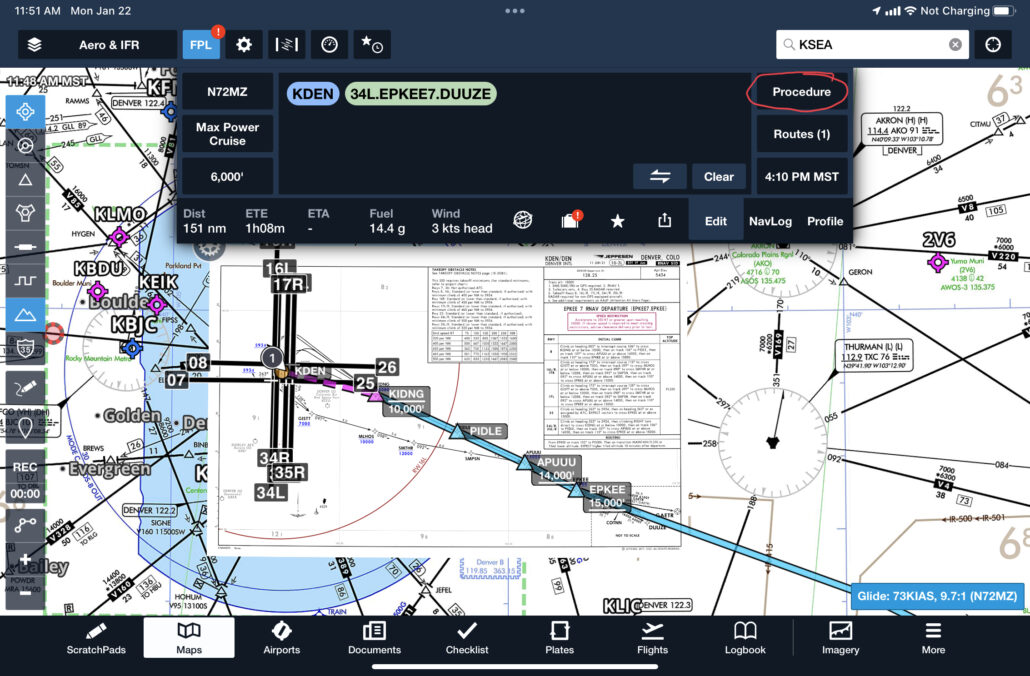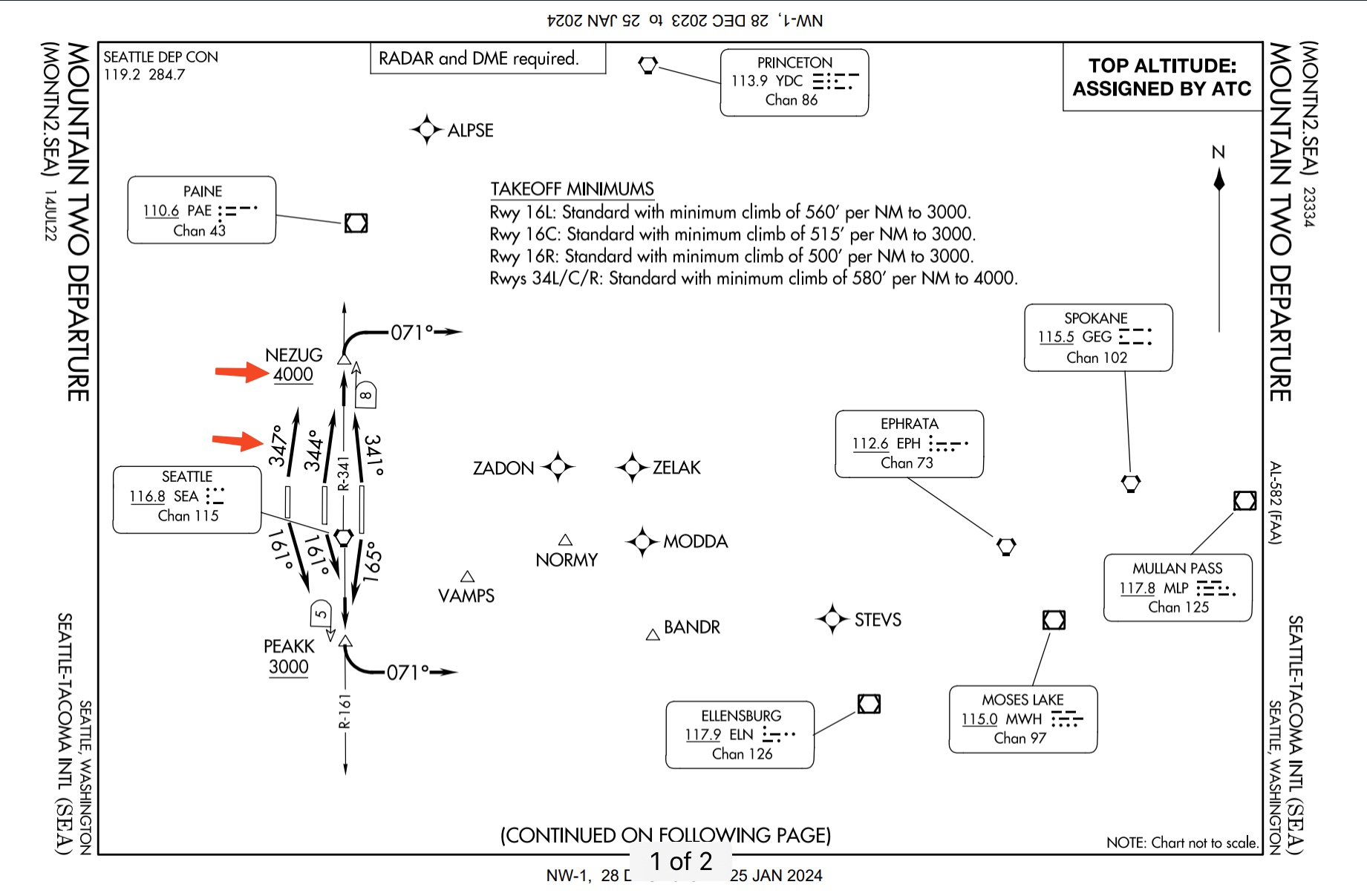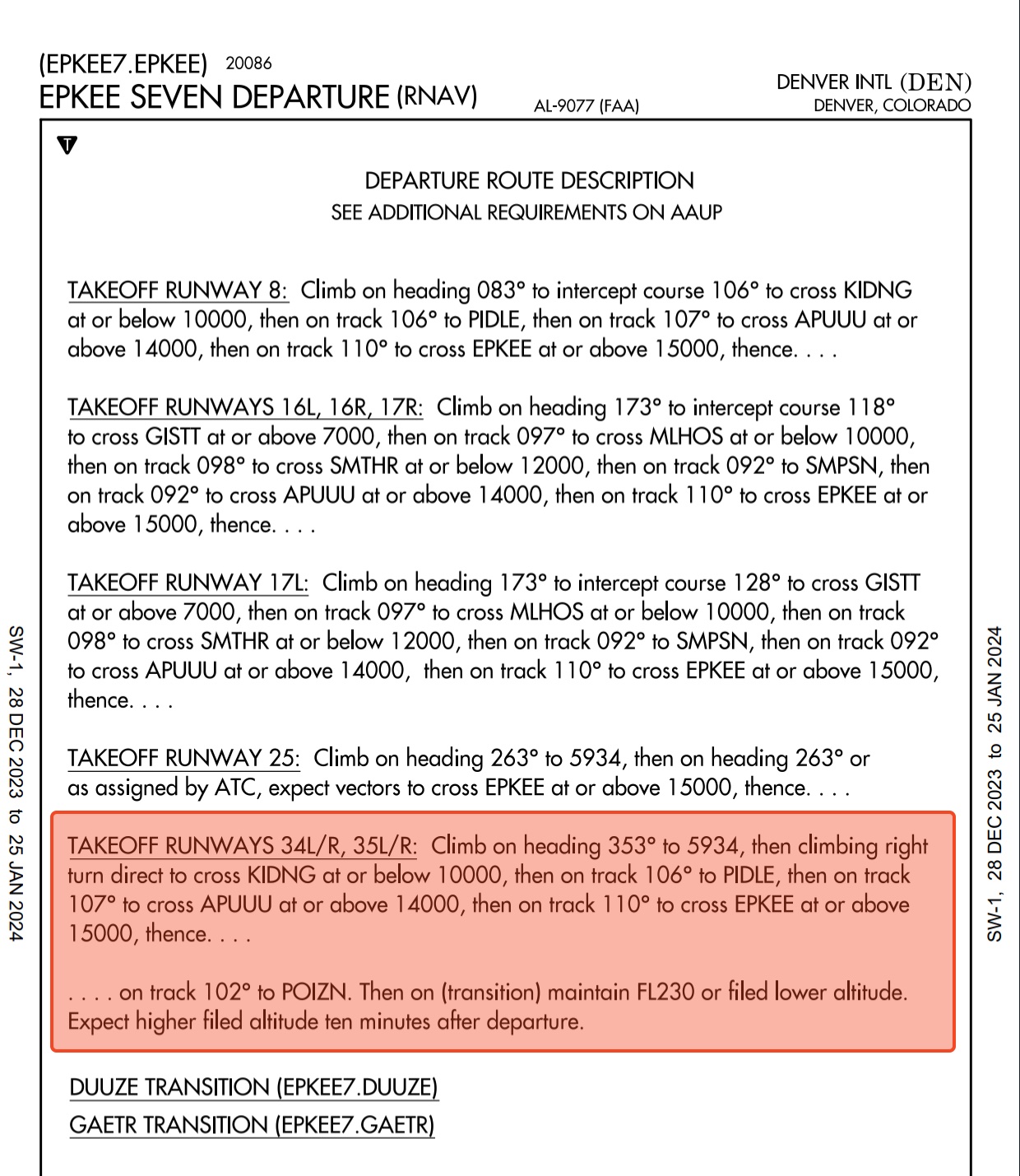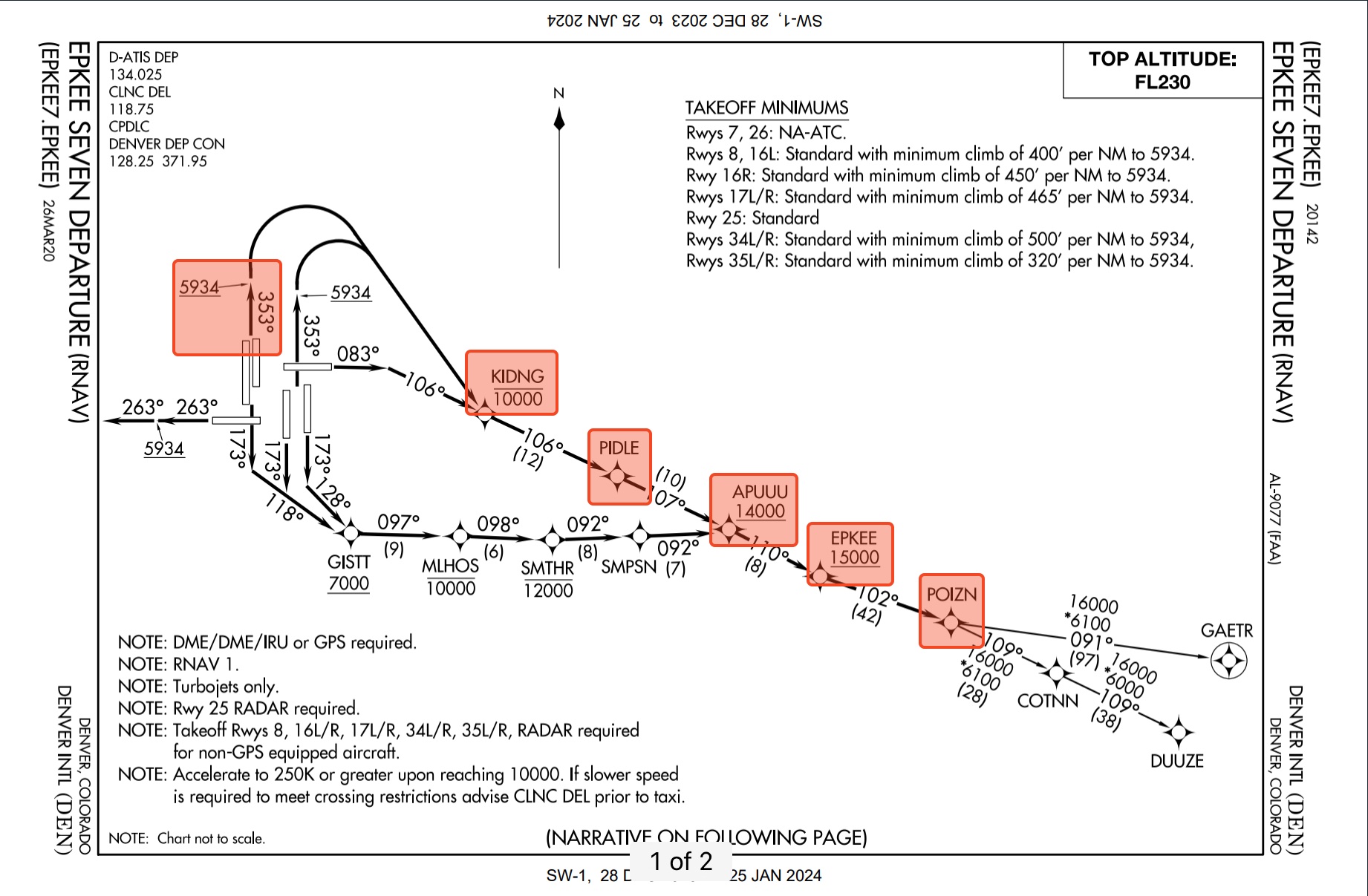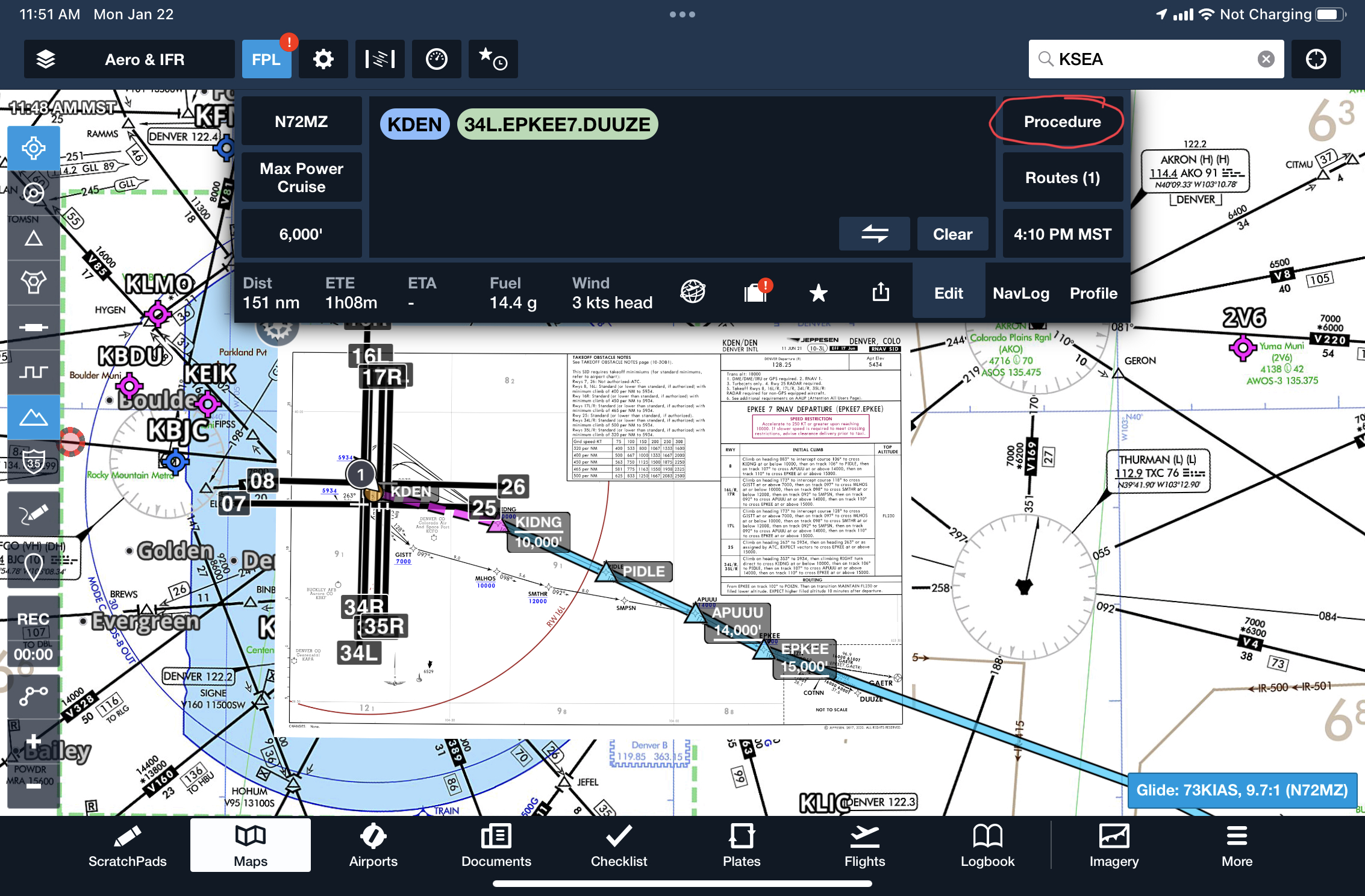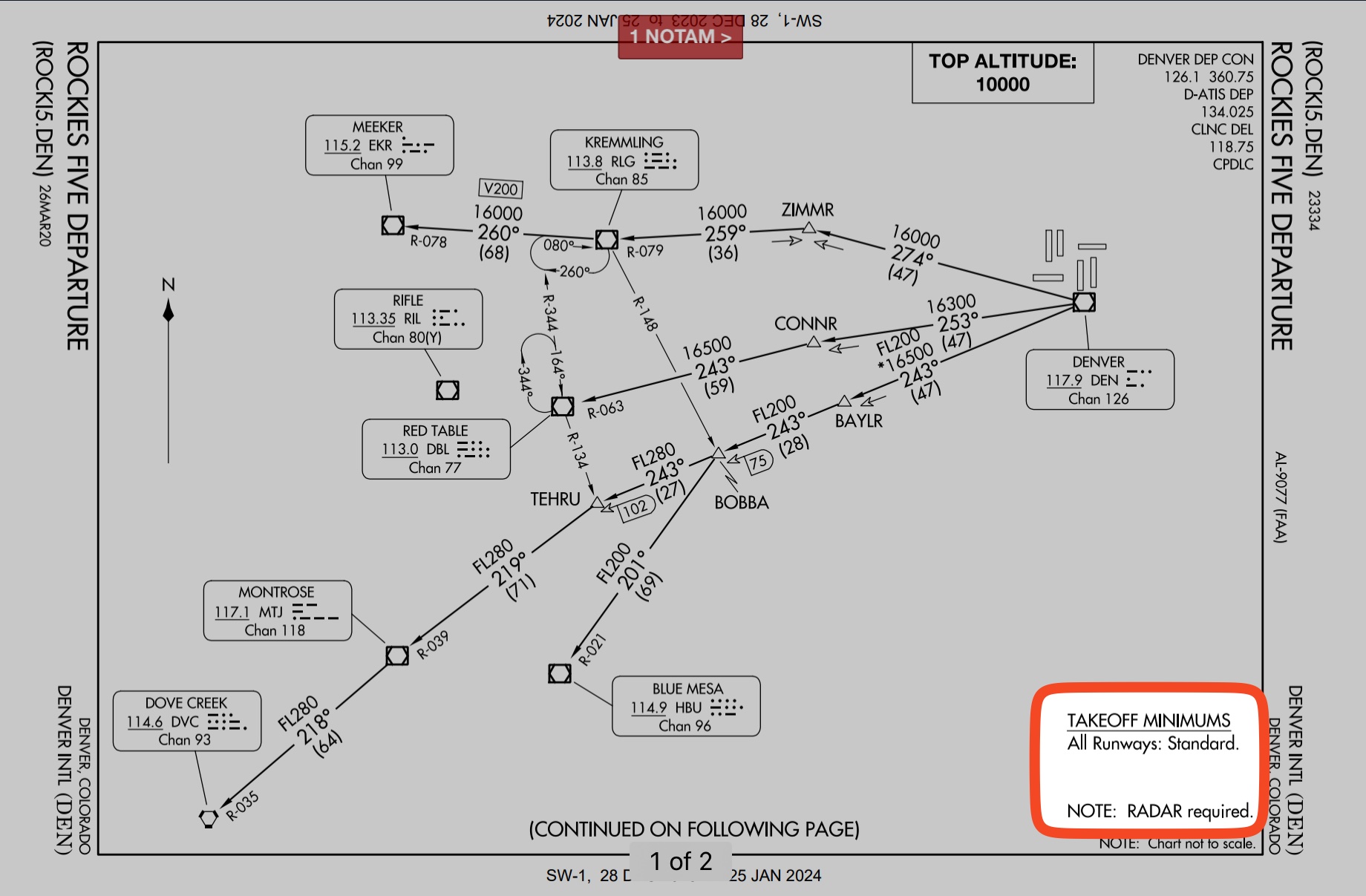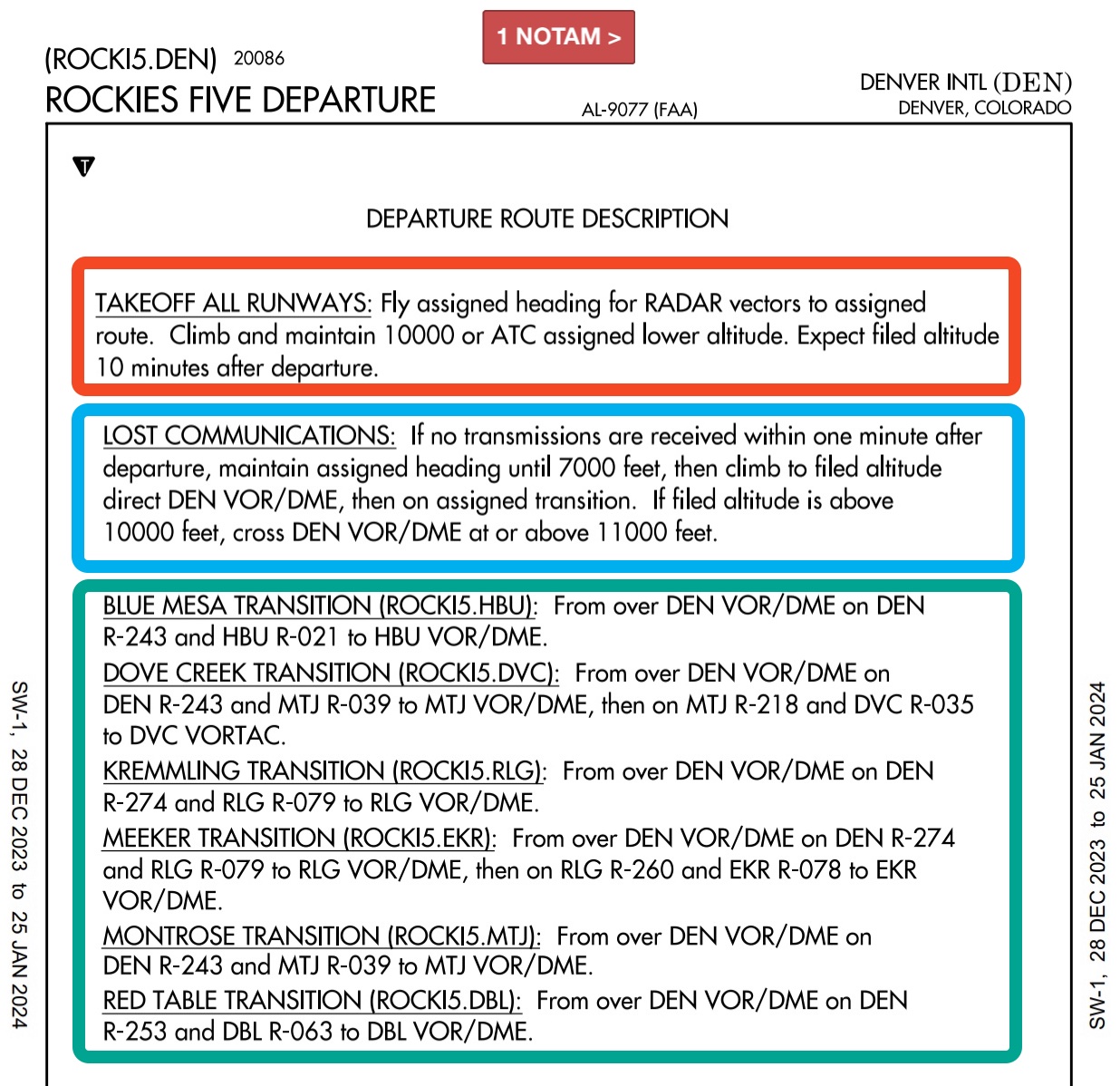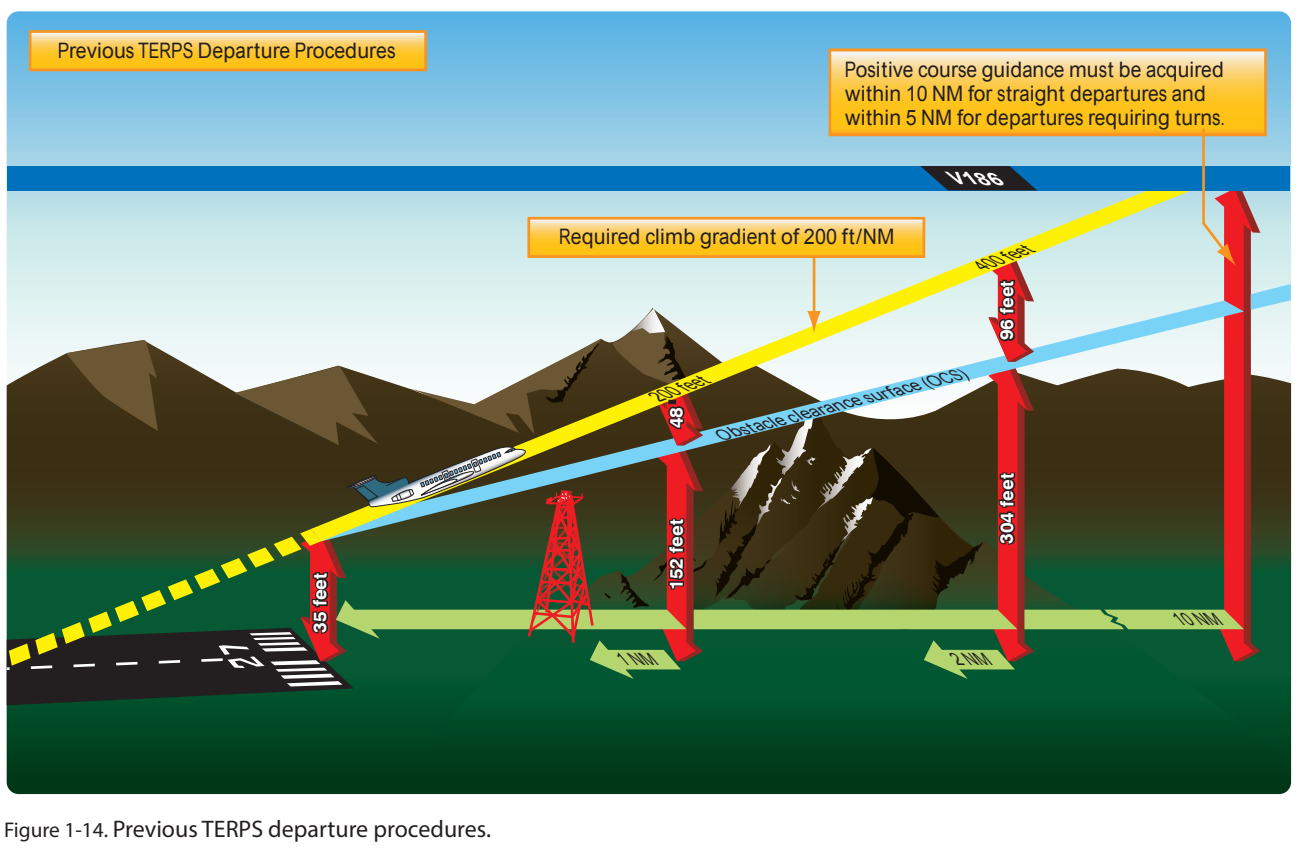Have you ever wondered how airplanes take off into the skies, especially when visibility is low or the weather is less than ideal? The answer lies in IFR (Instrument Flight Rules) departure procedures.
Instrument departure procedures are preplanned IFR procedures that provide obstruction clearance from the terminal area to the appropriate en route structure and provide the pilot with a way to depart the airport and transition to the en route structure safely.
There are two types of departure procedures. The first type is called an obstacle departure procedure [ODP]. Obstacle departure procedures are printed either textually or graphically.
The other type of departure procedure is called a standard instrument departure. [SID] and these procedures are always printed graphically.
Regardless of whether the procedure is a ODP or a SID, they are designed using either conventional or area navigation (RNAV) criteria.
Standard Instrument Departure (SID)
A SID is an ATC-requested and developed departure route, typically used in busy terminal areas. It is designed at the request of ATC in order to increase capacity of terminal airspace, effectively control the flow of traffic with minimal communication, and reduce environmental impact through noise abatement procedures.
While obstacle protection is always considered in SID routing, the primary goal is to reduce ATC/pilot workload while providing seamless transitions to the en route structure. ATC clearance must be received prior to flying a SID.
There are 3 different types of SIDs you need to be aware of.
Radar Departure
This first type of departure and it requires the pilots fly a predetermined heading after takeoff and then receiving a vector from ATC.
In this example, after departing from runway 34, we’d fly a heading of 347° until reaching an altitude of 4000′, at which time ATC would make radar contact with us and vector us on course; perhaps to one of the fixes on this plate.
After being vectored to a fix, we’d then proceed on course and continue to follow further instructions from ATC.
On page two of this plate, we’re also provided with a set of text-based instructions that present the same information in a text format instead of a graphical format.
As with the graphical instructions, here we can see that when departing runway 34L, we are to climb on heading 347° to cross NEZUG/SEA 8 DME at or above 4000, then right turn to heading 071° for RADAR vectors to assigned route/fix, thence…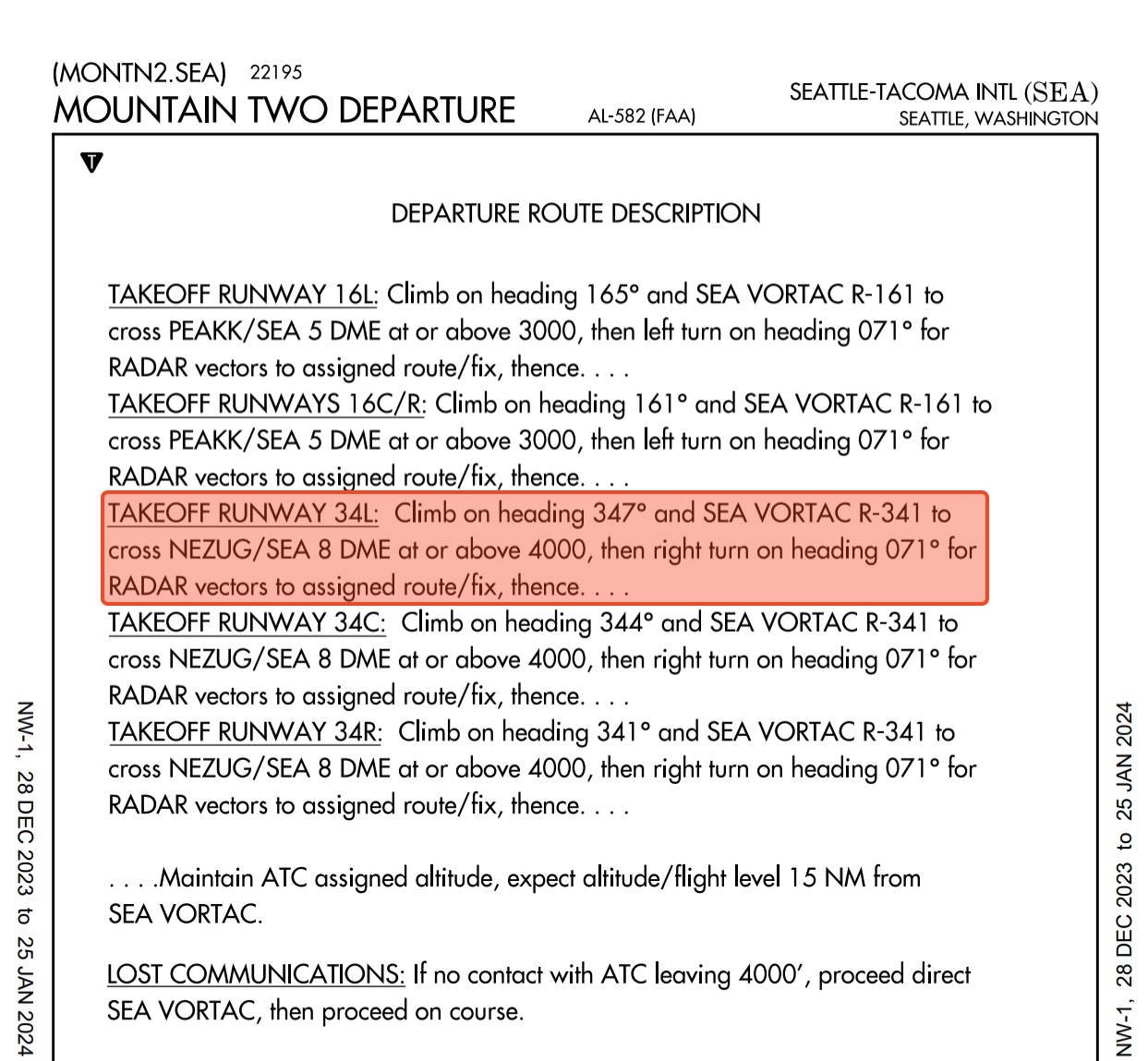
RNAV Departure
The second type of departure is called an RNAV departure. You can always tell that you are looking at an RNAV departure because it will contain the word RNAV in the name of the departure.
Unlike a radar departure that is dependent on ATC providing vectors to aircraft, the RNAV departure relies on the pilot to fly pre-planned routes. The main advantage of this type of departure is that is doesn’t require nearly as much communication with ATC.
In the route description below, we can see that if we are departing from runways 34 or 35, we are to climb on heading 353° to 5934, then climbing right turn direct to cross KIDNG at or below 10000, then on track 106° to PIDLE, then on track 107° to cross APUUU at or above 14000, then on track 110° to cross EPKEE at or above 15000 thence on track 103° to POIZN. Then on (transition) to maintain FL230 or filed lower altitude. Expect higher altitude 10 minutes after departure.
Now take a look at the graphical version of the same information.
If you are a Foreflight user, you can easily load up a departure like this by tapping the procedure button and then selecting the departure you are looking for.
Hybrid Departure
Below is an example of the Rockies Five Departure from Denver. The last type of departure is a hybrid departure. Unlike the RNAV departure above, this departure doesn’t have the routes drawn from the runway to the rest of the transition.
Hybrid SIDS involve both radar vectors and pre-planned route transitions. And you can tell this is the case because in the bottom right, it says, RADAR required.
When being cleared by ATC for a departure like this, they are going to tell you both the name of the departure you are cleared to use, as well as which transition on the departure they want you to use.
You can also expect ATC to give you a radar vector right after departure. Then, upon radar contact, you can expect ATC to give you a clearance that will likely include an altitude to fly, as well as a fix to fly towards.
Now lets take a look at the route description.
As you can see in the red box, for all runways, aircraft are to fly the assigned radar vectors to the assigned route.
Should communications be lost, the instructions are described in the blue box.
And then down in the green box, are the text-based descriptions for each transition; of which there are 6.
Charted transition routes allow pilots to transition from the end of the basic SID to a location in the en route structure. Typically, transition routes fan out in various directions from the end of the basic SID to allow pilots to choose the transition route that takes them in the direction of intended departure. A transition route includes a course, a minimum altitude, and distances between fixes on the route.
In order to fly a SID, the pilot must receive an ATC clearance for the departure and the associated transition, and the clearance from ATC will include both the departure name and transition (e.g., Joe Pool Nine Departure, College Station Transition)
Now lets take a look at the graphical description of each transition. As you can see, each of the six transitions is named (Meeker, Red Table, Blue Mesa, etc…) and then in the green box you can see that for a given transition, the heading, distance, and expected altitude are displayed.
Obstacle Departure Procedures
The term ODP is used to define procedures that simply provide obstacle clearance. ODPs are only used for
obstruction clearance and do not include ATC-related climb requirements. In fact, the primary emphasis of ODP design is to use the least restrictive route of flight to the en route structure or to facilitate a climb to an altitude that allows random (diverse) IFR flight, while attempting to accommodate typical departure routes.
An ODP must be developed when obstructions penetrate the 40:1 departure OCS, as described in FAA Order 8260.3. Only one ODP will be established for a particular runway. This is considered the default IFR departure procedure for a given runway and is intended for pilot awareness and use in the absence of ATC radar vectors or SID assignment.
ODPs are not assigned by ATC unless absolutely necessary to achieve aircraft separation. It is the pilot’s responsibility to determine if there is an ODP published for that airport.
During planning, pilots need to determine whether or not the departure airport has an ODP. Remember, an ODP can only be established at an airport that has instrument approach procedures (IAPs). An ODP may drastically affect the initial part of the flight plan. Pilots may have to depart at a higher than normal climb rate, or depart in a direction opposite the intended heading and maintain that for a period of time, any of which would require an alteration in the flight plan and initial headings.
Additionally, when close-in obstacles are noted in the Takeoff Minimums and (Obstacle) Departure Procedures section, it may require the pilot to take action to avoid these obstacles.
Design Criteria
On page 1-16 of the Instrument Procedures Handbook you will see the following text:
The design of a departure procedure is based on FAA Order 8260.3, United States Standard for Terminal Instrument Procedures (TERPS), which is a living document that is updated frequently. Departure design criterion begins with the assumption of an initial climb of 200 ft/NM after crossing the DER at a height of at least 35 feet.
Let’s take a look at the take off minimus for Colorado Springs Municipal (KCOS).
As you can see in the area highlighted in red, there are take off minimums described for reach runway. In the case of runway 31, the standard take off minimums are 260 FT/NM until reaching an altitude 7300.
Not sure how many feet per minute (FPM), 260 FT/NM is? No problem, on Jeppesen charts, they include a handy table that allows pilots to easily convert FT/NM into FPM for various ground speeds. So, if you are expecting a ground speed of 100 Kts, then you’d need to be able to climb at a rate of at least 417 FPM until you reached an altitude of 7,300.
In addition to the climb rate, this DP also instructs pilots departing on runway 31 to perform a climbing right turn to heading of 050° for RADAR vectors to filed/assigned route.

